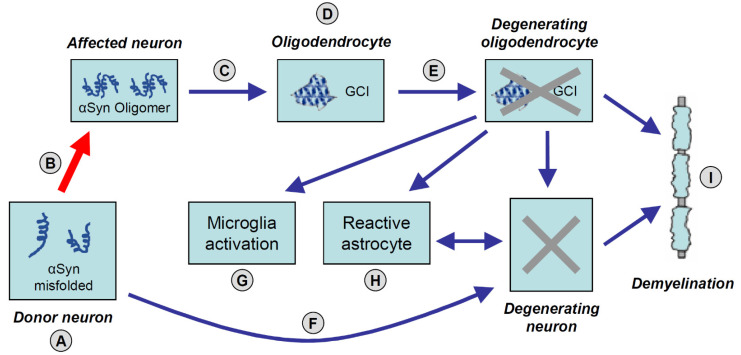Figure 1.
Suggested accumulation and spreading mechanisms of pathological α-synuclein (αSyn) leading to neurodegeneration in MSA. (A) Aggregation of αSyn as tetramers and oligomers in neurons. (B) “Prion-like” cell-to-cell spreading of abnormally folded αSyn via exosomes (red arrow). (C) αSyn aggregates and oligomers released from affected neurons into the extracellular space through exocytosis. (D) αSyn aggregation in oligodendroglial cytoplasm. (E) Formation of characteristic glial cytoplasmic inclusions (GCIs) in oligodendroglia containing αSyn and p25α. (F) Prionoid material can be transmitted directly across synapses causing neurodegeneration. (G) Activated micro-/astroglial cells by cytokines released from damaged oligodendrocytes and degenerating neurons. (H) Aggregation of αSyn (or other prionoid material) in astrocytes that are also activated by neuronal loss. (I) Demyelination caused by damaged oligodendroglia and related to degenerating neurons.

